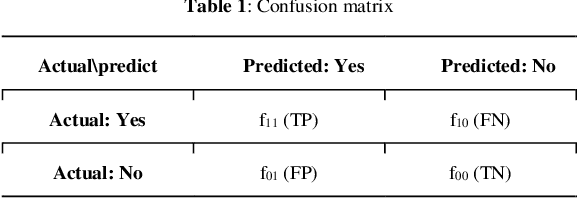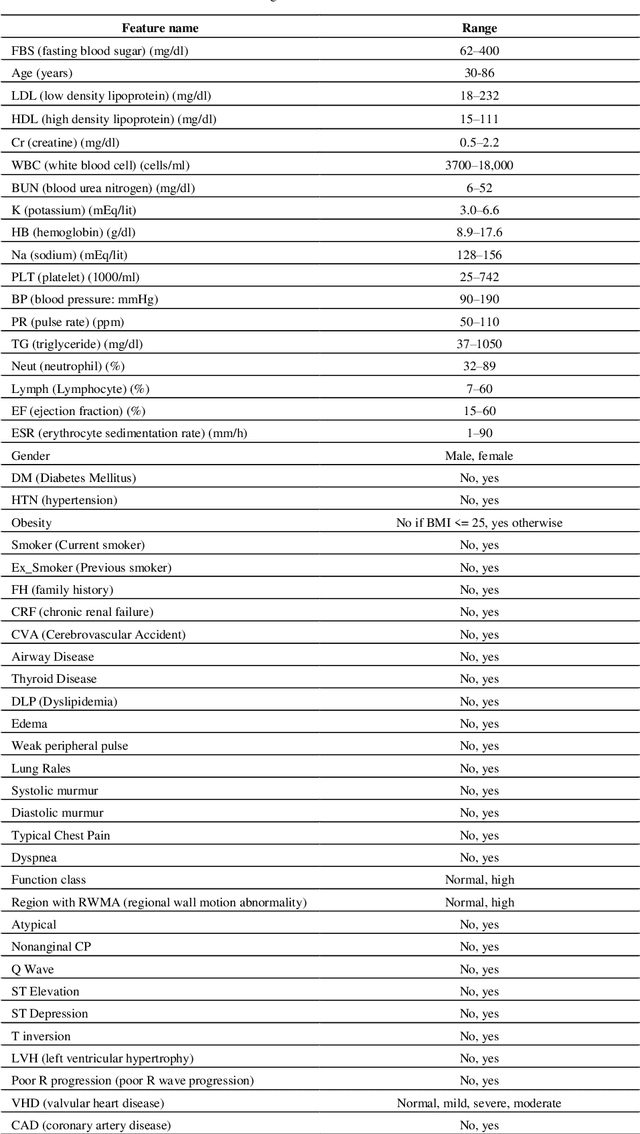A Profile-Based Binary Feature Extraction Method Using Frequent Itemsets for Improving Coronary Artery Disease Diagnosis
Paper and Code
Sep 22, 2021



Recent years have seen growing interest in the diagnosis of Coronary Artery Disease (CAD) with machine learning methods to reduce the cost and health implications of conventional diagnosis. This paper introduces a CAD diagnosis method with a novel feature extraction technique called the Profile-Based Binary Feature Extraction (PBBFE). In this method, after partitioning numerical features, frequent itemsets are extracted by the Apriori algorithm and then used as features to increase the CAD diagnosis accuracy. The proposed method consists of two main phases. In the first phase, each patient is assigned a profile based on age, gender, and medical condition, and then all numerical features are discretized based on assigned profiles. All features then undergo a binarization process to become ready for feature extraction by Apriori. In the last step of this phase, frequent itemsets are extracted from the dataset by Apriori and used to build a new dataset. In the second phase, the Genetic Algorithm and the Support Vector Machine are used to identify the best subset of extracted features for classification. The proposed method was tested on the Z-Alizadeh Sani dataset, which is one the richest databases in the field of CAD. Performance comparisons conducted on this dataset showed that the proposed method outperforms all major alternative methods with 98.35% accuracy, 100% sensitivity, and 94.25% specificity. The proposed method also achieved the highest accuracy on several other datasets.
 Add to Chrome
Add to Chrome Add to Firefox
Add to Firefox Add to Edge
Add to Edge